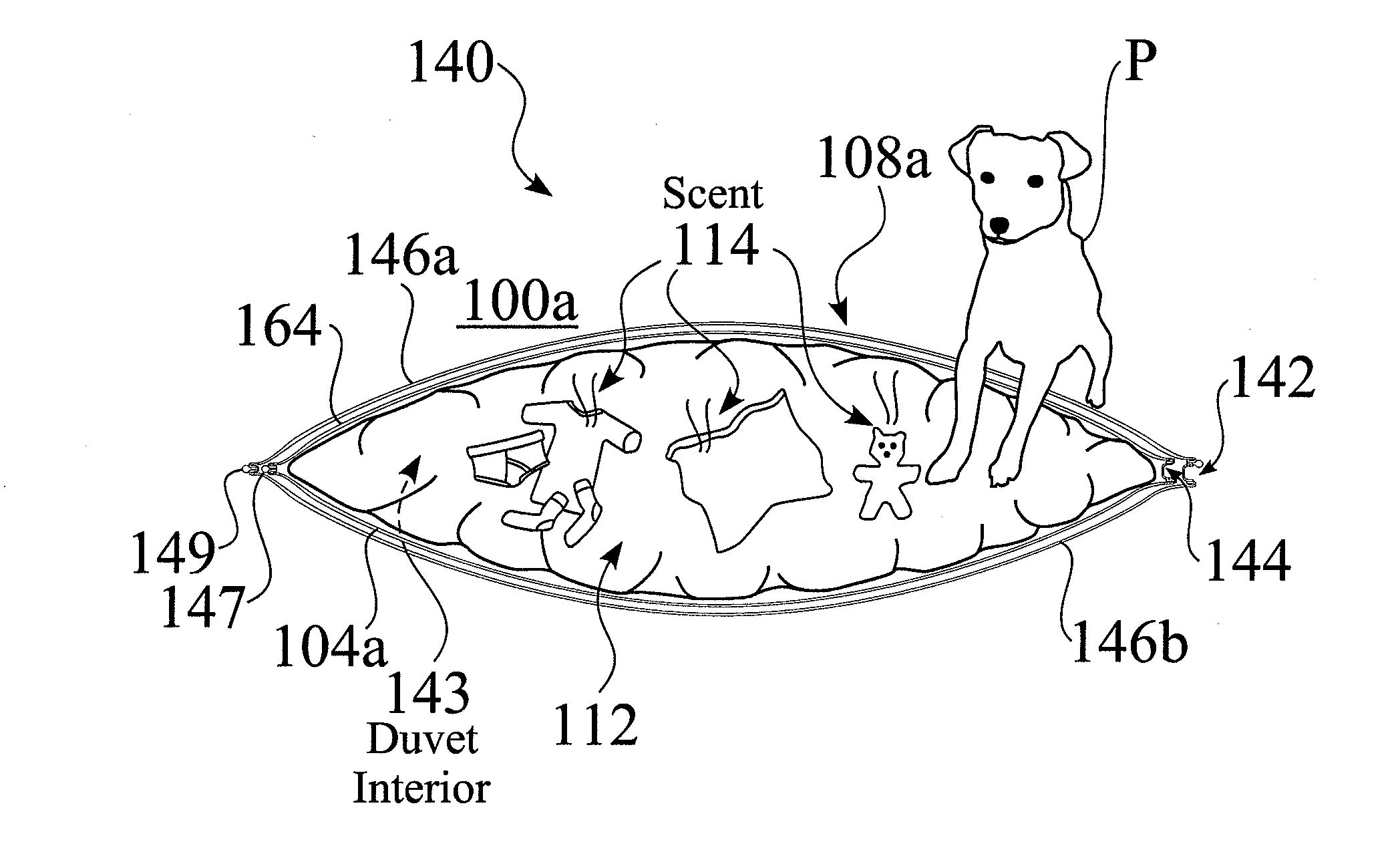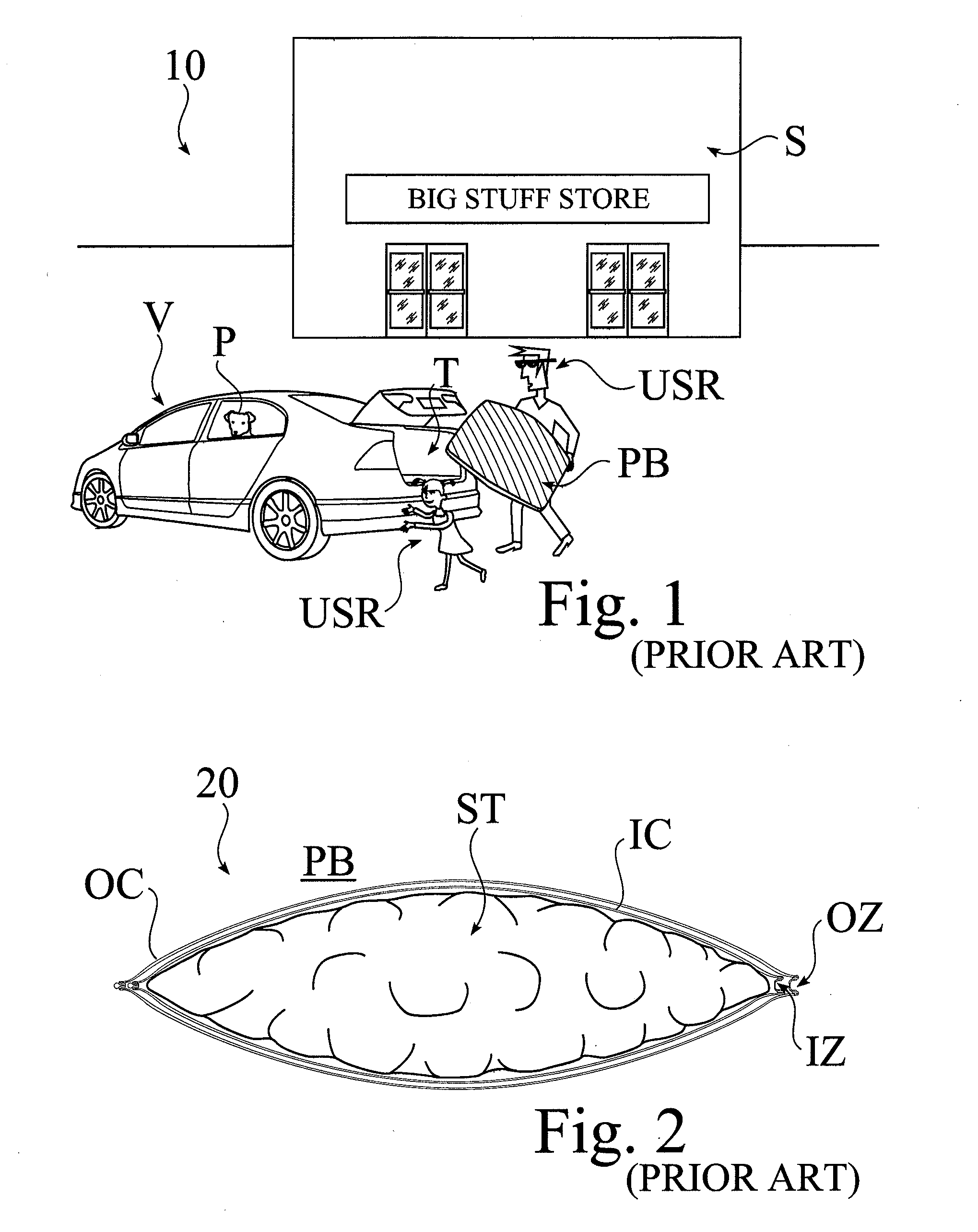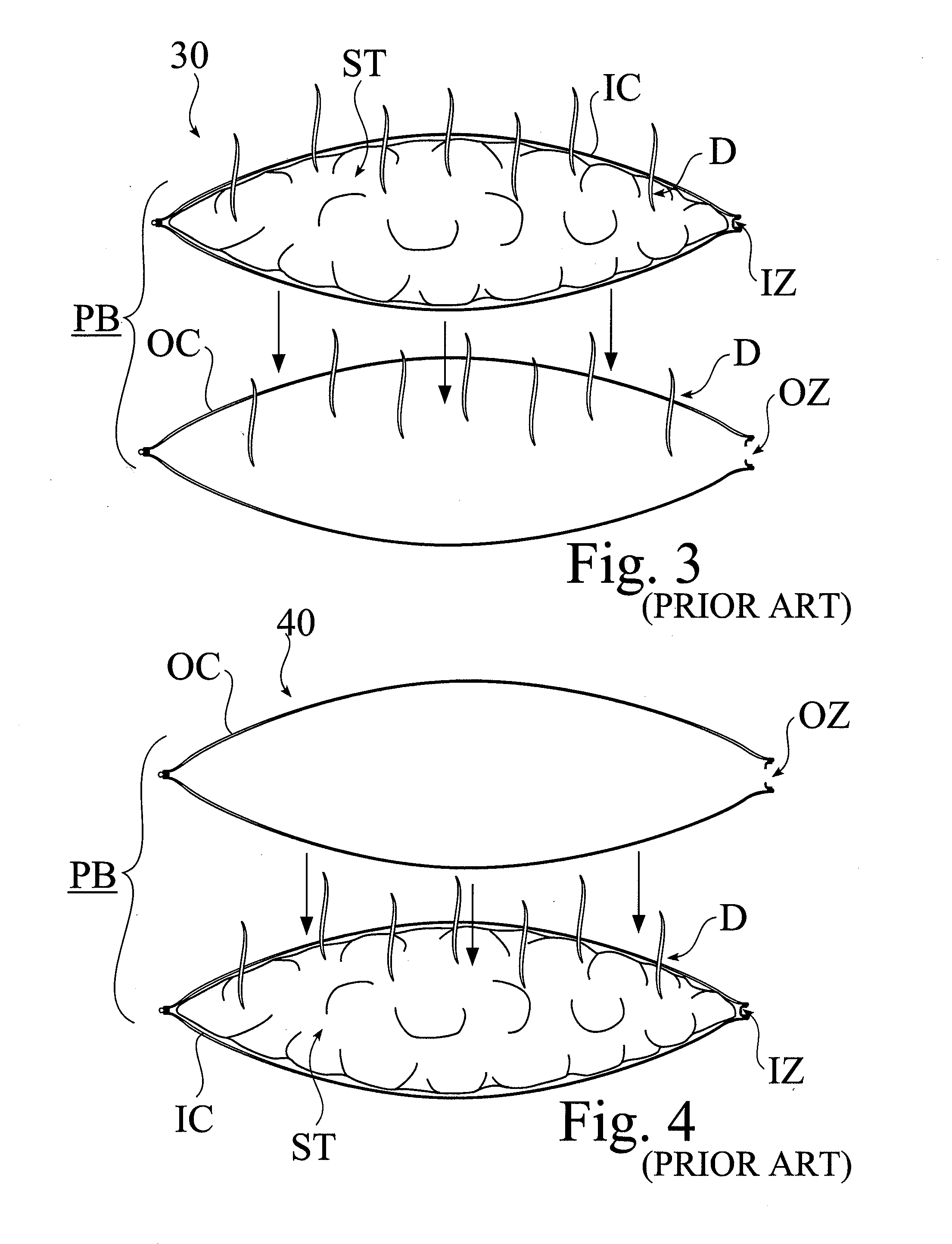Enhanced pet bed system
a technology for pet beds and beds, applied in the field of pet beds, can solve the problems of reducing the space within the living area of the pet, reducing the anxiety of the intended pet, and hesitant to accept a new pet, so as to reduce the resultant waste, increase the space within the living area, and facilitate the purchase and transportation.
- Summary
- Abstract
- Description
- Claims
- Application Information
AI Technical Summary
Benefits of technology
Problems solved by technology
Method used
Image
Examples
Embodiment Construction
[0044]FIG. 1 shows the acquisition 10 of a conventional pet bed PB. While conventional pet beds PB may be purchased through a wide variety of sources, such as through local pet stores, mail order catalogs, and / or Internet suppliers, an increasing number of such pet beds PB are often sold through big box stores, e.g. Costco Wholesale Corporation, of Issaquah, Wash., or discount pet supply stores, such as but not limited to Petco Animal Supplies, Inc. of San Diego, Calif. or PetSmart, Inc. of Phoenix, Ariz., which can sell pet beds inexpensively, due to their purchasing power, transportation costs, and business structures.
[0045]As seen in FIG. 1, pet owners or handlers USR typically use a motor vehicle V, having limited cargo space T, to visit a store S and purchase a conventional pet bed PB for their pet P.
[0046]FIG. 2 is a schematic partial cutaway view 20 of a conventional pet bed PB. An outer cover OC typically comprises upper and lower cloth panels, and may have non-gusseted or g...
PUM
 Login to View More
Login to View More Abstract
Description
Claims
Application Information
 Login to View More
Login to View More - R&D
- Intellectual Property
- Life Sciences
- Materials
- Tech Scout
- Unparalleled Data Quality
- Higher Quality Content
- 60% Fewer Hallucinations
Browse by: Latest US Patents, China's latest patents, Technical Efficacy Thesaurus, Application Domain, Technology Topic, Popular Technical Reports.
© 2025 PatSnap. All rights reserved.Legal|Privacy policy|Modern Slavery Act Transparency Statement|Sitemap|About US| Contact US: help@patsnap.com



